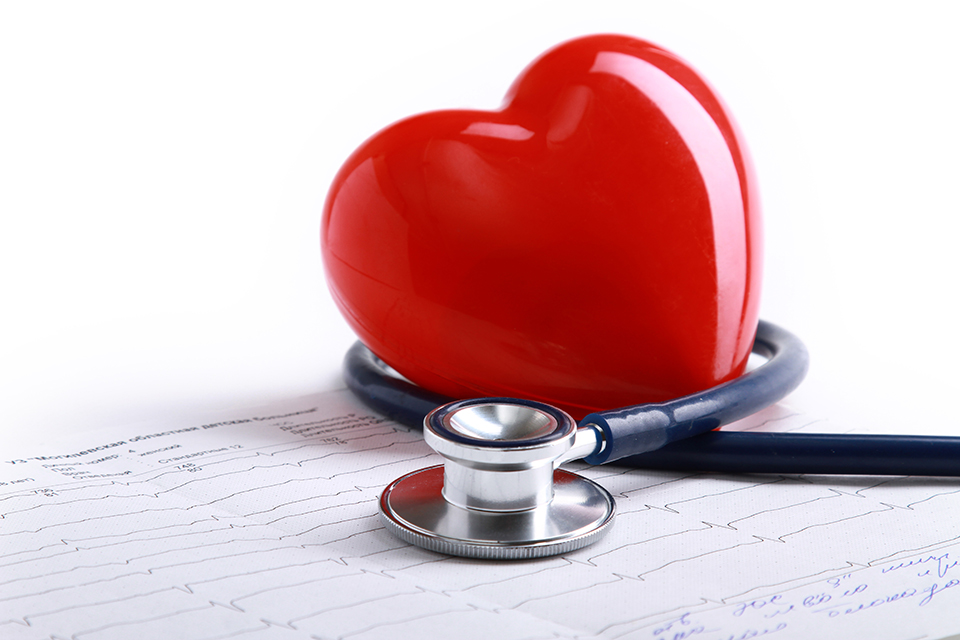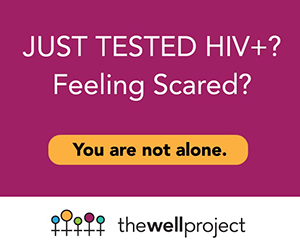
Lea esta hoja informativa en español
Table of Contents
- Heart Disease Basics
- Symptoms of a Heart Attack
- Risk Factors for Heart Disease
- HIV and Heart Disease
- Reducing the Risk for Heart Disease
- Taking Care of Yourself
Heart Disease Basics
Many people think of heart disease as a problem for men, yet it is a leading cause of death for women worldwide. In the US, heart disease was the number one cause of death for women in 2019, accounting for about one in five of all female deaths. Many women who die suddenly of coronary heart disease have no symptoms of heart trouble before they die. This is why it is important to get regular check-ups and understand your risk for heart disease (see Risk Factors of Heart Disease below).
A heart attack occurs when a plaque breaks free from a blood vessel's wall and forms a clot that blocks an artery which is supplying blood to your heart.
Heart disease is a type of cardiovascular disease (CVD). This means that it affects your heart and blood vessels. There are several types of heart disease. The most common in the US is coronary artery disease (CAD), or coronary heart disease (CHD). It affects the blood vessels that supply the heart muscle and is most commonly associated with heart attacks. Another type is cerebrovascular disease, which affects the blood vessels that supply the brain. This type is most commonly associated with strokes.
CAD or CHD occur when hard patches, called plaques, build up in the blood vessels that supply blood to the heart. Plaque is made up of cholesterol, a fat-like substance found in the blood. Plaque buildup causes the arteries (blood vessels leading to the heart) to get narrower and become less flexible. This process is called atherosclerosis.
A heart attack occurs when a plaque breaks free from a blood vessel's wall and forms a clot that blocks an artery which is supplying blood to your heart. Because of this blockage, the oxygen-rich blood that the heart needs for pumping cannot reach it. As a result, part of the heart muscle may become injured or die.
Recent studies have shown that statins, a type of cholesterol-lowering drug, may reduce the amount of plaque in the blood vessels of people living with HIV. Thus, statins may help to reduce the risk of heart disease in people living with HIV. For more information, see Reducing the Risk for Heart Disease below.
Symptoms of a Heart Attack
For some people, the first sign of heart disease is a heart attack. Symptoms of a heart attack include:
- Pain, pressure, or discomfort in the chest: this may feel like heaviness, aching, burning, fullness, squeezing, or stabbing
- Shortness of breath
- Indigestion or heartburn
- Nausea or vomiting
- Pain in the arms, left shoulder, neck, throat, jaw, or back
- Heart palpitations (irregular beats)
- Increased heart rate ('racing' heart)
- Weakness
- Dizziness
- Sweating
As with men, women's most common heart attack symptom is chest pain or discomfort. However, one study reported that four in ten women experienced no chest pain during a heart attack. According to the American Heart Association, women are more likely than men to have some of the other common symptoms, particularly shortness of breath, nausea or vomiting, and back or jaw pain. Many women who have suffered a heart attack report that they simply felt like they had indigestion. If you feel heart attack symptoms, seek medical attention immediately.
Risk Factors for Heart Disease
Many women who die suddenly of coronary heart disease do not have any symptoms beforehand. You therefore should know your risk factors for heart disease and maintain good heart health. One of the most important factors is family history. If someone in your family has had heart disease, you are at greater risk for problems with your heart.
Age and gender also affect heart health. Generally, men are at greater risk than women and at an earlier age. For men, risk begins to go up at age 45 and continues to grow each year. For women, the risk generally does not start to go up until after menopause, when women lose the protective effect of estrogen. By age 65, the heart disease risk in women rises substantially.
Some studies have shown that taking hormone replacement therapy (HRT) may increase a woman's risk for heart disease, stroke, pulmonary embolism (blood clot in the lungs), and breast cancer. For some women, the benefits of hormone replacement therapy outweigh the risk of heart disease. If you are thinking about hormone replacement therapy, talk to your healthcare provider so that you can decide what is right for you.
Other risk factors for heart disease include:
- High blood pressure
- High cholesterol and/or high triglycerides (hyperlipidemia)
- Smoking
- Lack of exercise/physical inactivity
- Stress
- Poor diet and nutrition
- Being overweight or obese
- Diabetes
- Alcohol use
- Depression
- HIV
HIV and Heart Disease
People living with HIV have higher rates of heart disease than the general population. There are several reasons for this:
- Some HIV drugs and possibly HIV itself can cause lipodystrophy. Lipodystrophy means abnormal fat changes. It is used to describe a number of unwanted changes in body fat that are experienced by people living with HIV. Lipodystrophy can also include changes in fat and sugar levels in the blood. Some of these changes are risk factors for heart disease, including high blood fats or lipids (cholesterol and triglycerides) and diabetes.
- Some HIV drugs and possibly HIV itself can also cause high blood fats (hyperlipidemia) and diabetes, even without lipodystrophy
- HIV itself causes inflammation that can lead to damage to the heart and blood vessels, potentially increasing the risk of heart disease
While some HIV drugs can cause side effects that may increase the risk of heart disease, studies have shown that HIV medications may actually protect against heart disease, as well as keeping HIV and other HIV-related conditions under control.
A study from Denmark also suggests that the primary reason for the higher risk of heart disease in people living with HIV is that they smoke more than people who are HIV-negative. If there is one thing you can do to improve your heart health – and your health overall – it is to quit smoking. For more information and suggestions on how to quit, see our article on Smoking and Tobacco Use.
Reducing the Risk for Heart Disease
People living with HIV should find out about their risk factors for heart disease and take steps to reduce them. Ask your healthcare provider about the HIV drugs you take to see if any may be raising your lipid (cholesterol and triglyceride) levels. Some newer classes of drugs may not affect your lipids as much as older drugs. Switching drugs may not be an option for everyone. It is important that you not change your HIV drugs without first talking to your healthcare provider.
While you may not be able to change some risk factors, you can do many things to reduce your risk for heart problems:
- Quit smoking — smoking is the biggest risk factor for heart disease. If quitting is not an option for you right now, try cutting back on how much you smoke.
- Watch your blood pressure — high blood pressure increases the workload of the heart. If you have high blood pressure, speak to your healthcare provider about treatment options. If you have high blood pressure, take your prescribed medications daily.
- Ensure your provider checks your lipid levels — if HIV drugs cause your cholesterol or triglyceride levels to rise, you may need to switch drugs or use lipid-lowering drugs such as statins. Proper diet and nutrition can also help you maintain healthy lipid levels.
- Get regular exercise — being physically active can help reduce your risk for heart disease. It may also help to reduce your cholesterol and blood pressure.
- Watch your weight — if you are overweight, you are more likely to develop heart disease
- Make sure your provider checks your blood sugar — if you have diabetes or high blood sugar, your risk for developing heart disease is greater. Keeping sugar levels in check can reduce your risk. If you are taking certain HIV drugs, you may be at a higher risk for diabetes; therefore, it is important that you have your blood sugar levels checked regularly.
- Get omega-3 fatty acids — these are found naturally in fish, nuts, seeds, and vegetable oils, but can also be taken as supplements. Recent research among people living with HIV has shown that taking omega-3 fatty acid supplements was associated with lower levels of triglycerides and of a marker for inflammation.
- Manage stress. Seek out ways to positively deal with life's stresses – whether this is talking to a therapist or integrating meditation or yoga into your life. For more information, see our fact sheet on Stress Management.
- Your healthcare provider may recommend aspirin to lower your risk of stroke or a heart attack. If so, taking the aspirin every day can reduce that risk.
Statin drugs are used to lower cholesterol and prevent heart disease. Early studies among people living with HIV also found that statins could reduce inflammation. Some scientists believe that inflammation is the key to the process of 'accelerated aging' that affects some people living with HIV. A large clinical trial called REPRIEVE showed that a statin drug called pitavastatin can reduce the risk of heart disease among people living with HIV.
Taking Care of Yourself
The good news is that there are many things you can do to help prevent and manage heart disease.
Your healthcare provider can determine your risk for heart disease by checking your blood pressure, cholesterol, and blood sugar, and by finding out about your family's history of heart disease. If you are at high risk or already have symptoms, your provider may suggest tests that can determine if you have heart disease. Medications may also be necessary. They can treat risk factors for heart disease, such as high lipid levels, high blood pressure, diabetes, an irregular heartbeat, and low blood flow.
Heart disease is a growing concern for both men and women living with HIV. One reason is that people are living longer with HIV because effective HIV drugs are used widely. The risk of heart disease increases naturally as you age.
The good news is that there are many things you can do to help prevent and manage heart disease. Healthy lifestyle choices, such as quitting smoking, improving your diet, getting regular medical checkups, and staying physically active, can all help you care for your heart. When lifestyle changes are not enough, several medications and other medical approaches are available.



